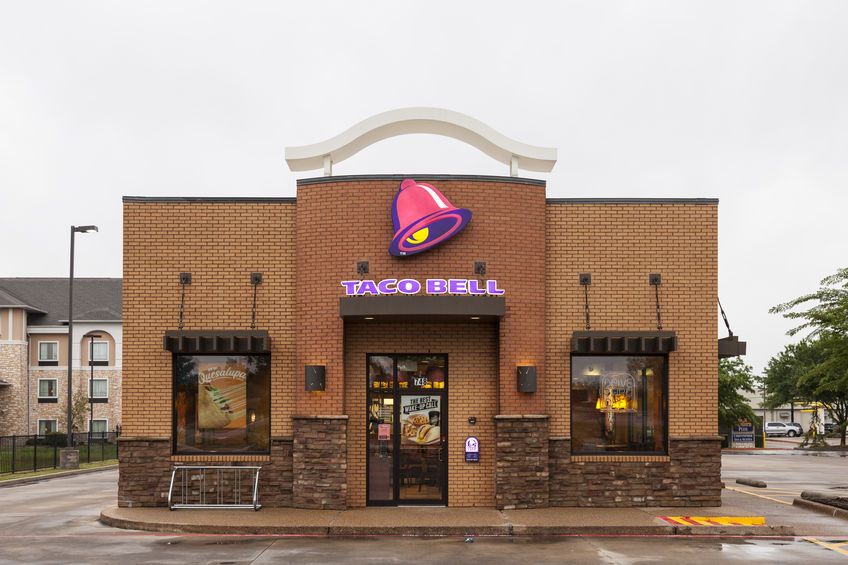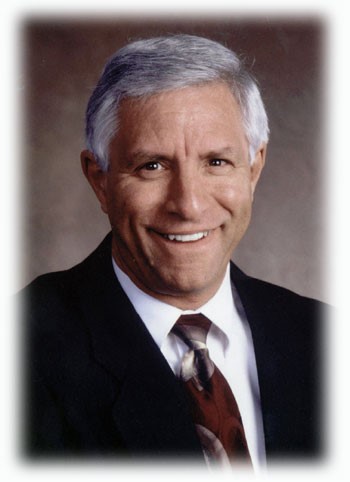Marketing has always been one of the great mysteries of the business community. What exactly does marketing mean? Is it relevant for a company of any size in any industry? Is it a viable strategy for the insurance industry?
Those are viable questions. While we can’t answer all of them in this article, here’s the answer to several of these questions and how it can be used to grow your business.
What does marketing mean?
There are a plethora of marketing definitions. But if you ask me, even those generally accepted ones can be pretty confusing. So I came up with a more understandable definition.
Marketing is… “defining a need and filling it.”
Six simple words that describe what marketing is all about. Determine the needs of customers and potential customers and fill those needs. If you can define those needs, there is a greater opportunity that consumers will buy your product or service.
Is marketing relevant for a company of any size in any industry and is it viable for the insurance industry?
Yes, regardless of company size or industry, marketing is a necessary component. It is a critical function that needs to be ongoing to maintain a profitable entity.
The problem with many organisations is that when sales decline or the industry begins to suffer a decline, most companies reduce or in some cases, eliminate marketing support. In my opinion, this definitely is the wrong strategy. If sales decline for whatever reason, marketing should be increased to offset the sales decline.
In the insurance industry, which has many firms offering highly similar products and services, marketing must be a key component of any company strategy to ensure growth and profitability.
Cutting marketing can be a serious, often times a dangerous approach. Marketing must be looked at as a long-term survival strategy not only a short-term instant fix. In the insurance industry, since many companies offer the same or similar products, successful marketing can be the difference between growth and failure.
Case studies
For this article, I will utilise a couple of real-life examples of how marketing was successful in growing the business for two world-renown companies. They are strictly for illustration purposes only but can apply to your company and business environment.

KFC - “We Do Chicken Right.”
“We Do Chicken Right” was the marketing campaign (strategy) for KFC throughout the decade of the 80s. Although it was a while ago, the principles still apply in today’s marketplace. How did this strategy come into fruition?
At the time, I was the marketing executive for the KFC Midwest Region in the late 70s. KFC was the number one fast food chicken seller. Still is today.
During that time, a new competitor was about to enter the city of Chicago. Their location strategy was simple - locate KFC stores and build as close as possible, a very effective strategy since our units were thriving and a very cost-effective approach.
However, they then went into our stores to convince our employees they should work for them. (A very unethical proposition.)
Read also: Why do rejections hurt so much? - A scientific explanation
Since most of our employees were minimum wage, any salary increase was enticing to them, and thus we began to lose our employees. My assignment was to stop the outflow of our employees. Not exactly a marketing assignment. But the task was undertaken by me.
After some competitive evaluation, I came up with four strategies:
1) Redo our pricing structure - lowering prices
By doing so, we would increase sales so that we could pay our employees more to offset the competition’s strategy.
BAD IDEA.
Since KFC is mainly a franchisee system, this would not go over well in that community. They had to pay royalties and marketing fees based on gross revenue not net profits. This strategy would be good for company stores but horrible for franchisees. Cost of goods sold would also increase so that idea was scrubbed.
2) Flood the city of Chicago with generic (not promoting KFC) chicken advertising, thus driving customers to our stores.
BAD IDEA.
Since most customers don’t pay that close attention to who made the advertisements, they could possibly think the advertising was for a competitor and increase total market sales, not just KFC.
Competition could benefit from our advertising plan. Idea scrubbed.
3) Schedule limited time only product promotions to drive customer traffic to our stores.
BAD IDEA. Same problem with strategy number 1.
Sales would increase, but profits would probably decline, and cost of goods would also increase. Good for the company, bad for the franchisees.
Remember this was in the 70s. Today this strategy works quite well for KFC.
4) “We Do Chicken Right.”
Since utilising price as a marketing tool in a commodity market is not a viable strategy (a valid marketing principle), another alternative approach needed to be created. Thus came the development of “We Do Chicken Right.”
Back then, our employee uniforms consisted of red and white stripes. Gaudy but tied into the motif of the red and white striped buildings.
I hired a professional photographer and took pictures of our employees in their uniforms. I then purchased outdoor billboards in local neighbourhoods, featuring our employees. On the top of the billboard above their heads read “AT KENTUCKY FRIED CHICKEN” and underneath the employees’ picture read “WE DO CHICKEN RIGHT!”
Almost immediately, the competitor stopped raiding our stores because now our employees were turning them down saying they couldn’t work for them since they were featured in KFC marketing. It wouldn’t look right working for the competition being featured in a KFC marketing campaign.
Sales also soared since people thought featuring our employees in a marketing campaign was really awesome and the line “We Do Chicken Right” became the marketing strategy for the company throughout the decade of the 80s.

The Taco Bell “Value Menu”
In the mid-eighties, Taco Bell had a market that was in a major sales decline. The marketplace was flooded with a wide variety of fast food restaurants with an abundance of Mexican competitors, all contributing to a major sales shortfall. The marketing task: how do we reverse the decline? The assignment fell to me.
Step 1 – Do a quick on-site market analysis to determine the cause of the decline.
By visiting the competition, the problem became clear. We had a very bad value proposition. Almost all competitors were selling items much lower than Taco Bell.
At the time, our best sellers were tacos, bean burritos and pinto beans with cheese. In our competitors’ stores, these items were priced much lower than ours. Although our quality was slightly better, the high price did not offset quality perception difference.
Step 2 – Determine who our customers were and what appealed to them.
That was pretty easy. All we did was sit in the stores and see who bought these items.
Today they are called Millennials, back then they were young customers. Because they were young, price and value were strong motivators to purchase.
Step 3 – Identify a remedy and create a marketing plan that would appeal to those customers.
We decided to bundle the three items, lower the price, call it a “value menu” and advertise on outdoor billboards and late-night “rock” radio. This had not been done in the past.
The results were staggering. In the months of June, July and August of 1983, sales rose a whopping 45 percentage points and profits jumped 22 percentage points. At the time it was the most successful promotion in the company’s history. Eventually, that marketing campaign became known as a “value menu” and it was the precursor of all other value menus in existence today, obviously with many variations.
Watch: Charge up for a better 2020
These two examples illustrate the power of marketing. The KFC story was an internal/external marketing issue while the Taco Bell story was external marketing. Both had amazing results. And while these examples do not specifically relate to the insurance industry, the analytical steps and marketing principles do apply to the insurance industry or any industry for that matter.
What’s next… How can marketing make a difference?
It is important to analyse the problem. This does not need to be an expensive or extensive undertaking. In both examples we just observed and talked to customers and/or employees.
Next, determine the underlying cause, not the symptom. This is critical if you want to find a viable solution. If you just determine the symptom and not the cause, you will probably head in the wrong direction.
Finally, create a remedy and a marketing plan to alleviate the cause. Once enacted, make sure you have a system to evaluate results to make sure your marketing plan works.
Also in today’s business environment don’t overlook the importance of social media. Having an online marketing presence is a very important strategy in today’s consumer environment.
Conclusion
In conclusion, several marketing principles are illustrated in these examples.
1. Understand the importance of need fulfilment. The internal customers (employees) are just as important as external customers. (Define the need and fill it.)
2. Define business goals and create marketing activities to accomplish those goals.
3. Recognise the importance of identifying your target market, internally and externally.
4. Ensure you describe the benefits of products or services in understandable terms.
5. Have a system in place to measure results.
6. Communicate to all involved.
These principles apply to any industry and company regardless of whether you are marketing a product or service or both. Make sure you analyse the industry and your competitive environment to create a strategy relevant for your company objectives.
Above all, embrace marketing as your friend. It will assist you in attaining your corporate or individual goals. Marketing can be both a short-term fix and a long-term corporate strategy for overall positive company performance.

Mr Steve Zipkoff, is the President/CEO of Zipkoff Solutions, a management education company established in 1992. He has over 40 years of retail marketing experience. An Instructor at SMU Cox Graduate School of Business, he has earned the Teaching Excellence Award 38 times for his course on “Delivering Customer Delight”.
Read also: Managing difficult customer behaviour
Asia Trusted Life Agents & Advisers Awards opens for nominations